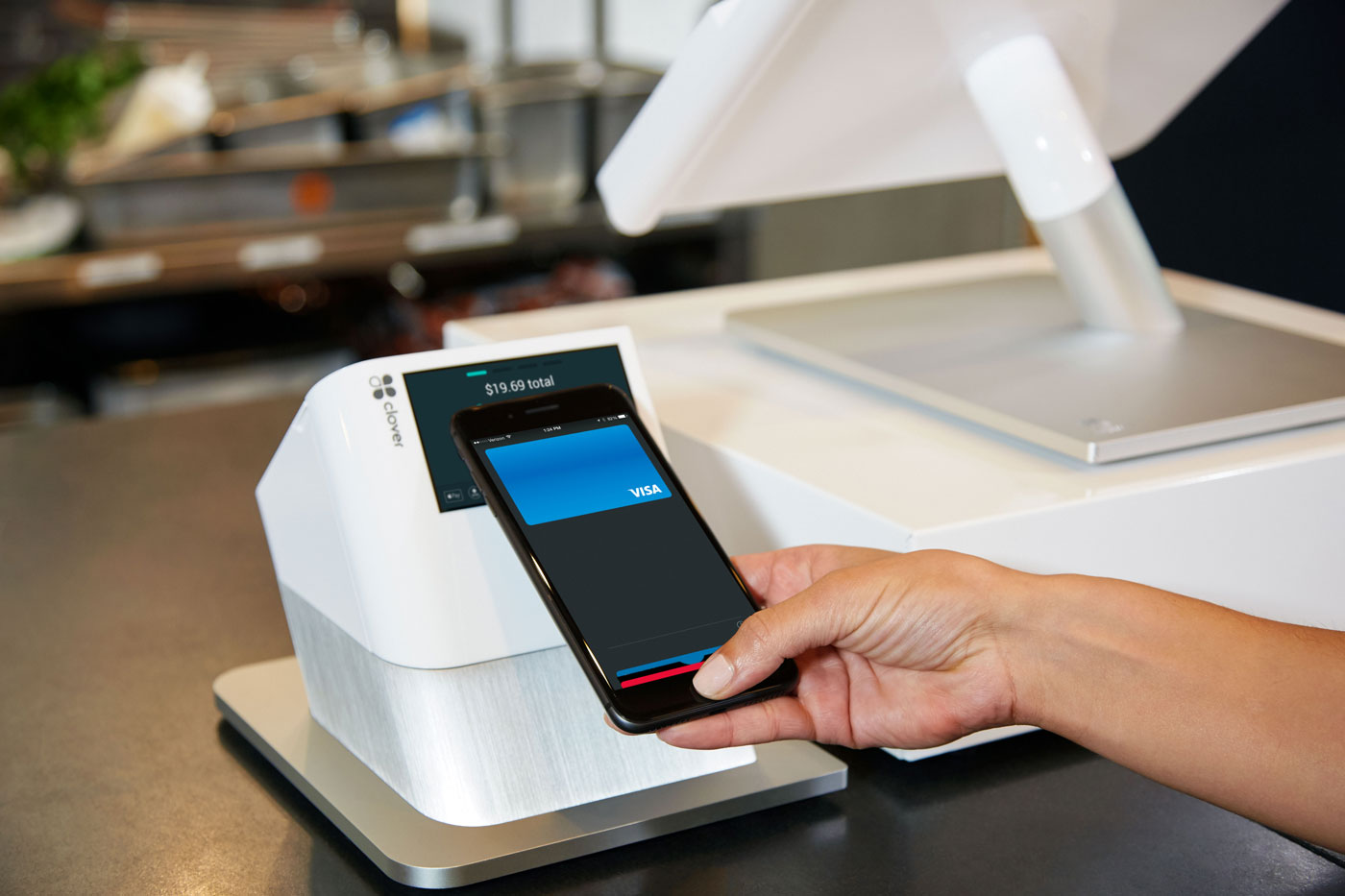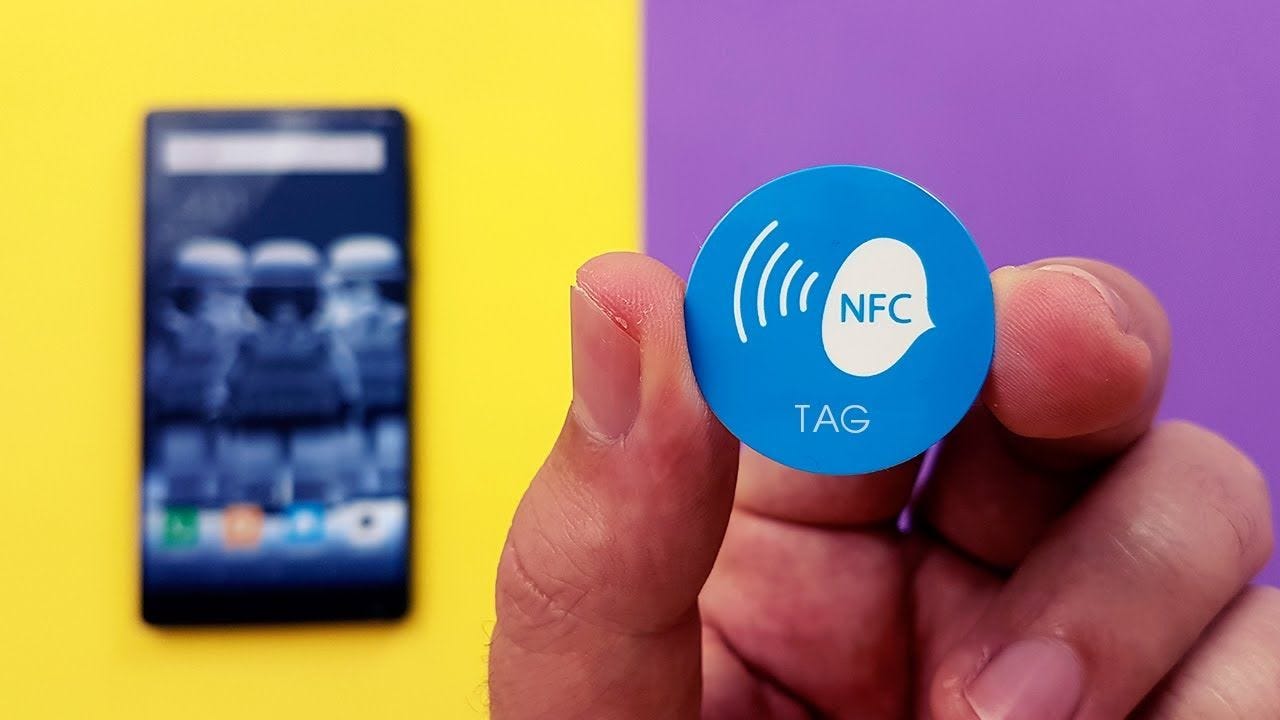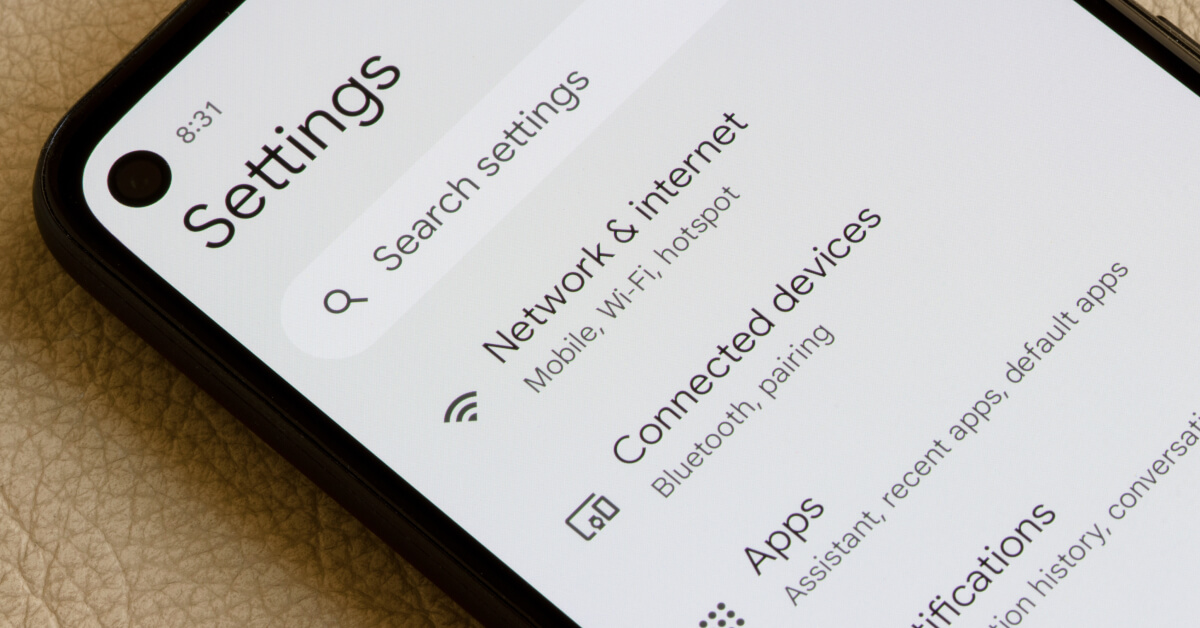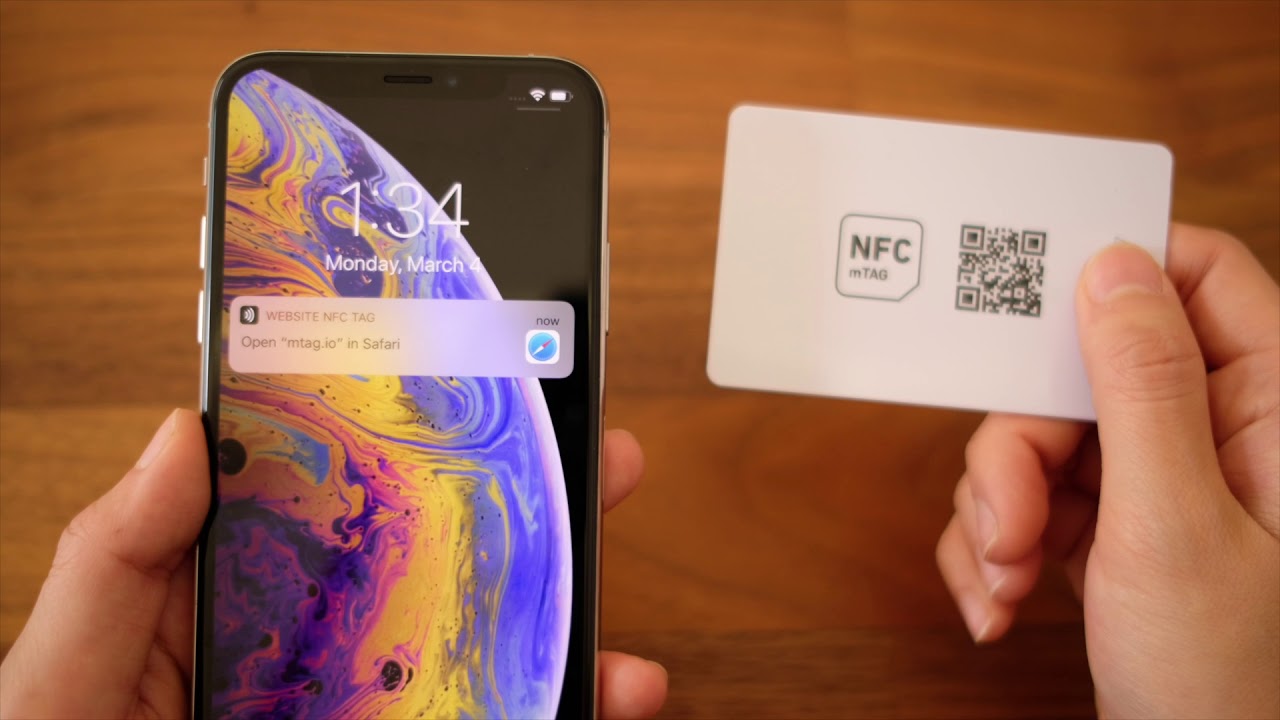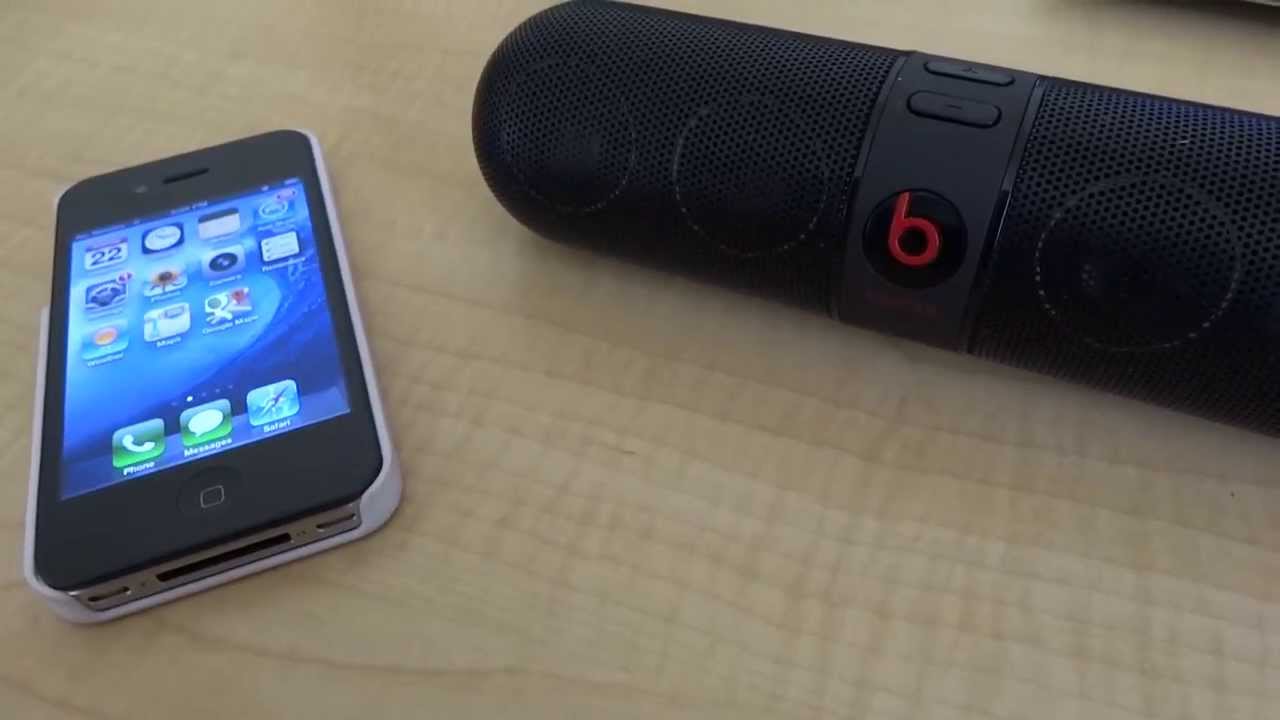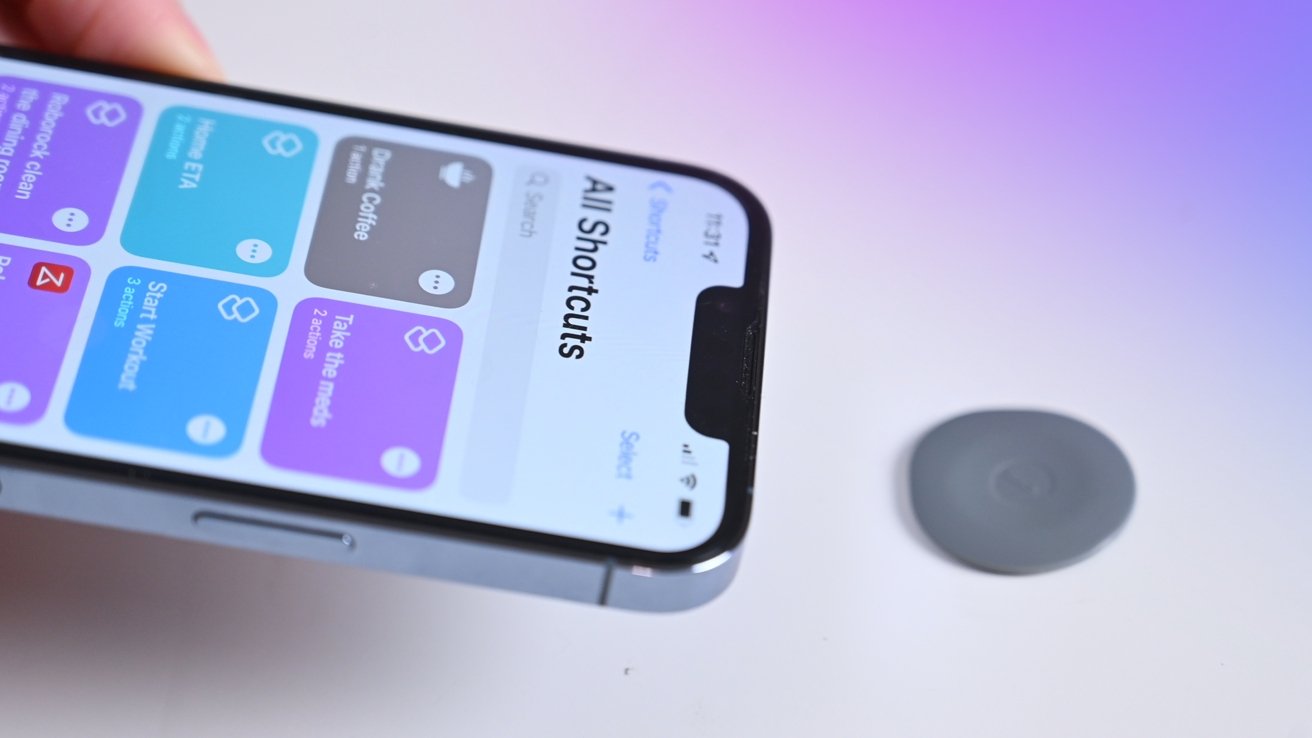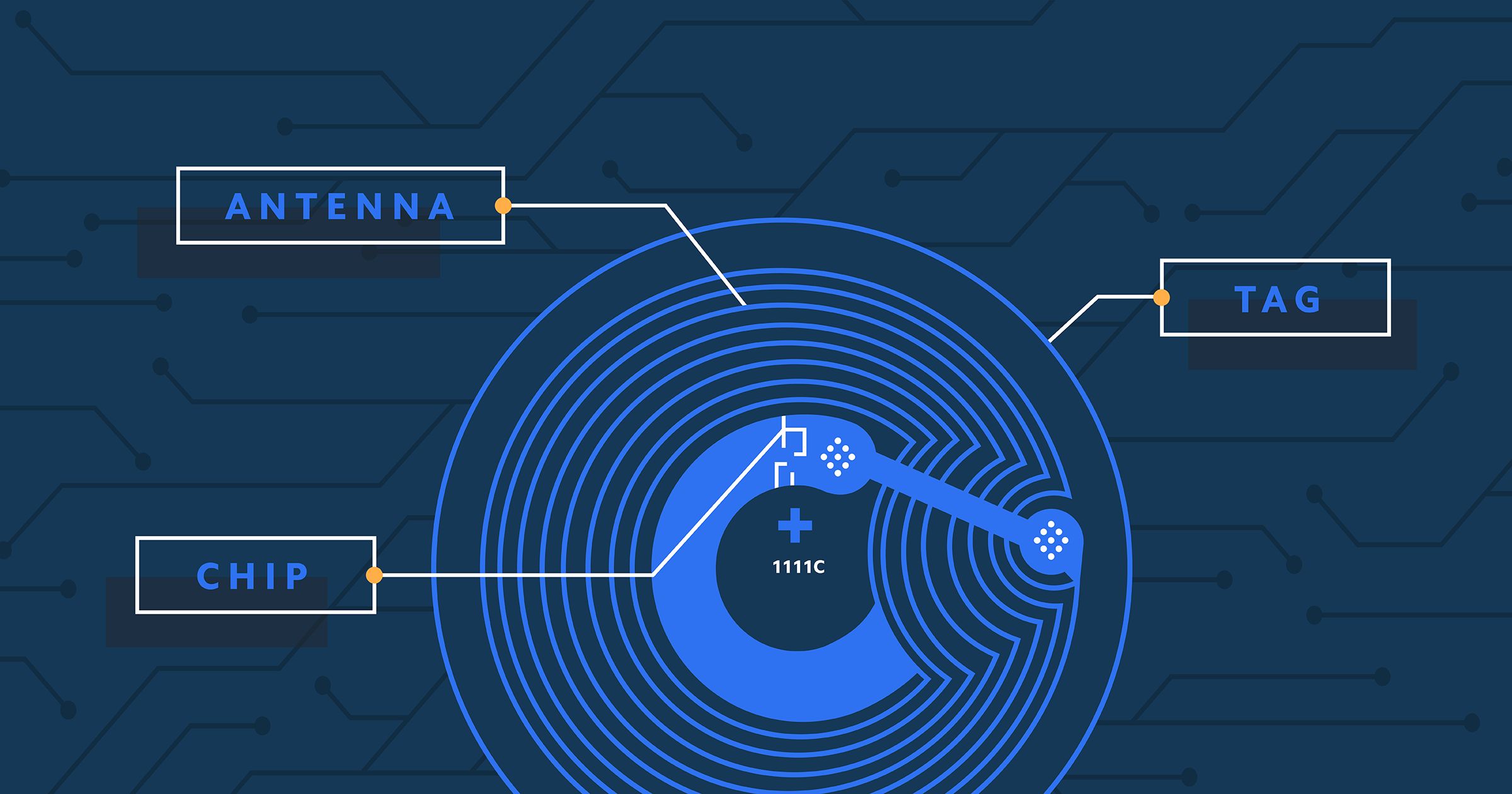Introduction
NFC, or Near Field Communication, is a wireless communication technology that allows devices to establish a connection by simply bringing them close together or tapping them. NFC devices have become increasingly prevalent in our daily lives, enabling convenient and secure interactions between smartphones, tablets, and even contactless payment systems.
This technology has revolutionized the way we interact with our devices and the world around us. From mobile payments to data sharing, NFC has opened up a whole new realm of possibilities. In this article, we will explore what NFC is, how it works, the different types of NFC devices, and their various applications.
NFC, often referred to as a proximity-based communication technology, operates on the principle of electromagnetic induction. It allows communication between two devices in close proximity, usually within a few centimeters. This short-range wireless communication makes NFC incredibly secure and efficient.
The primary objective of NFC is to simplify the way we interact with our devices by making them more intuitive and user-friendly. With a simple tap or wave, NFC enables seamless connections and transfers of information between compatible devices.
The widespread adoption of NFC technology has led to the development of a variety of NFC-enabled devices. These devices come in various forms and serve different purposes, such as smartphones, tablets, smartwatches, payment terminals, and even NFC-equipped access control systems.
One of the key advantages of NFC is its compatibility with existing contactless smart card technology, which means that many existing contactless systems can be upgraded to support NFC without significant infrastructure changes.
In the following sections, we will delve into the technical details of NFC, its working mechanism, the different types of NFC devices available, and the wide array of applications that leverage NFC technology. We will also discuss the security and privacy concerns associated with NFC and the measures in place to address them.
What is NFC?
NFC, which stands for Near Field Communication, is a wireless communication technology that enables close-range interactions between electronic devices. It is a short-range radio frequency identification (RFID) technology that allows devices to establish a connection by simply bringing them close together, typically within a few centimeters. NFC operates at a frequency of 13.56 MHz and is capable of two-way communication between devices.
Unlike other wireless communication technologies like Bluetooth or Wi-Fi, NFC does not require complex pairing processes or manual configuration. It allows for quick and effortless data exchange by simply touching or tapping two NFC-enabled devices together. This combination of convenience and simplicity has made NFC increasingly popular in various domains.
NFC relies on electromagnetic induction to establish a connection between devices. When two NFC devices are brought close together, electromagnetic waves are created, which allow for communication between the devices. One device acts as the initiator or active device, while the other device acts as the target or passive device. The initiator device generates an electromagnetic field that powers the target device and allows it to respond.
One of the essential features of NFC is its ability to operate in three different modes: card emulation mode, reader/writer mode, and peer-to-peer mode. In card emulation mode, an NFC-enabled device, such as a smartphone, can emulate a contactless smart card, allowing it to perform tasks like mobile payments. In reader/writer mode, an NFC-enabled device can read and write data to a contactless tag or smart card. In peer-to-peer mode, two NFC-enabled devices can establish a two-way communication channel to exchange data.
NFC technology has gained significant traction, particularly in the mobile payments industry. With NFC-enabled smartphones, users can make secure and convenient contactless payments by simply tapping their devices on compatible payment terminals. Many major mobile payment platforms, such as Apple Pay, Google Pay, and Samsung Pay, have adopted NFC technology to enable seamless transactions.
Besides mobile payments, NFC has found applications in various other domains. It is widely used for sharing small amounts of data, such as contact information, between smartphones. NFC can also be utilized for proximity marketing, where businesses can deliver targeted advertisements or offers to customers in close proximity to NFC tags or beacons.
In the next sections, we will explore the working mechanism of NFC, the different types of NFC devices, their advantages, applications, and the security and privacy concerns associated with this technology.
How Does NFC Work?
NFC, or Near Field Communication, technology is based on the principles of electromagnetic induction and radio frequency identification (RFID). It operates at a frequency of 13.56 MHz and allows for close-range communication between electronic devices. NFC works by enabling a quick and secure exchange of information between devices through a simple touch or tap.
When two NFC-enabled devices, such as smartphones or tablets, are brought into close proximity, they generate an electromagnetic field between them. This field allows the devices to establish a connection and exchange data. One of the devices acts as the initiator or active device, while the other device acts as the target or passive device.
The active device generates an electromagnetic field by creating an alternating current that passes through the coil in its NFC antenna. This field provides power to the passive device and allows it to respond. The passive device, in turn, employs the same coil in its NFC antenna to generate an electromagnetic field in response to the active device’s field.
Once the connection is established, NFC allows for bi-directional communication between the two devices. This means that both devices can send and receive data simultaneously. The communication between the devices is accomplished through the exchange of NFC data packets, which are transmitted via the generated electromagnetic fields.
NFC operates in three main modes: card emulation mode, reader/writer mode, and peer-to-peer mode. In card emulation mode, an NFC-enabled device, such as a smartphone, can function as a contactless smart card. This allows users to make mobile payments, access secure facilities, or use loyalty cards, all without the need for physical cards or separate devices.
In reader/writer mode, an NFC-enabled device can read data from and write data to NFC tags or smart cards. NFC tags are small, inexpensive devices that can store various types of data, such as URLs, contact information, or authentication credentials. This mode is commonly used in applications like interactive advertisements, access control systems, or inventory management.
Peer-to-peer mode enables two NFC-enabled devices to establish a connection and exchange data. This mode is particularly useful for sharing files, contacts, or photos between smartphones or initiating Bluetooth or Wi-Fi connections. Peer-to-peer mode also enables communication between NFC devices and other wireless technologies like Bluetooth or Wi-Fi.
NFC technology offers several advantages over traditional communication methods. It is fast, requiring only a brief moment to establish a connection and exchange data. NFC is also secure since the close proximity required for communication minimizes the risk of unauthorized access. Additionally, NFC is easy to use, as it does not require complicated setup or configuration processes.
In summary, NFC technology utilizes electromagnetic induction and RFID principles to enable quick and secure communication between devices. It operates in different modes, allowing devices to emulate contactless cards, read and write data to NFC tags, or establish peer-to-peer connections. The simplicity, speed, and security of NFC have made it a widely adopted technology in various industries and applications.
Types of NFC Devices
NFC technology has been integrated into various types of devices, expanding its reach and enabling a wide range of applications. These devices leverage NFC capabilities to enhance user experiences, simplify transactions, and facilitate seamless data exchange. Here are some common types of NFC devices:
1. Smartphones and Tablets
NFC-enabled smartphones and tablets are among the most widely used NFC devices. These devices allow users to perform a multitude of tasks, including contactless payments, data sharing, and connecting with other NFC devices. The integration of NFC technology in smartphones has paved the way for various mobile payment platforms and digital wallet applications.
2. Payment Terminals and Point-of-Sale Systems
NFC-enabled payment terminals and point-of-sale (POS) systems play a crucial role in facilitating contactless transactions. Merchants can accept mobile payments by simply tapping or waving NFC-enabled cards or smartphones at the NFC terminal. These devices are commonly used in retail stores, restaurants, and other businesses to provide a quick and convenient payment experience.
3. Access Control Systems
NFC technology is utilized in access control systems to provide secure and convenient entry to buildings, offices, and restricted areas. NFC-enabled access control devices, such as card readers or keypads, can authenticate users’ credentials embedded in NFC cards or smartphones. This eliminates the need for physical keys or access cards, enhancing security and streamlining access management processes.
4. Smartwatches and Wearable Devices
NFC integration in smartwatches and wearable devices expands their functionality by enabling contactless payments, data sharing, and synchronization with other NFC-enabled devices. Users can make payments, access digital boarding passes, or transfer data by simply tapping their NFC-enabled smartwatches or wearables on compatible devices or terminals.
5. Smart Home Devices
NFC technology is increasingly being adopted in smart home devices to simplify device pairing, data transfer, and automation processes. NFC-enabled smart home devices, such as smart speakers, thermostats, or security systems, can be easily connected with smartphones or other NFC devices, allowing users to control and manage their smart home ecosystem conveniently.
6. Public Transportation Systems
NFC plays a significant role in modernizing public transportation systems. NFC-enabled contactless cards or smartphones can be used as electronic tickets, allowing passengers to tap and pay for fare without the need for physical tickets or cash. These systems enhance efficiency and reduce waiting times at ticketing stations, making commuting more convenient for travelers.
These are just a few examples of the numerous NFC-enabled devices available today. The versatility and widespread adoption of NFC technology continue to drive innovation, opening new possibilities for seamless connectivity, secure transactions, and enhanced user experiences.
Examples of NFC Devices
NFC technology has become increasingly prevalent in various devices, transforming the way we interact with technology and conduct everyday transactions. Here are some examples of NFC-enabled devices that have gained popularity:
1. Smartphones
Smartphones, such as iPhones and Android devices, have integrated NFC capabilities, allowing users to tap or wave their phones to make payments, share files, connect with other devices, and more. Mobile payment platforms like Apple Pay and Google Pay rely on NFC technology to enable secure and convenient contactless transactions.
2. Contactless Payment Cards
Contactless payment cards, often referred to as “tap and go” cards, utilize NFC technology for seamless transactions. By tapping their contactless payment cards on NFC-enabled payment terminals, users can quickly complete payments without the need for physical card insertion or PIN entry. These cards are widely accepted by merchants globally.
3. Wearables
Wearable devices like smartwatches and fitness trackers often incorporate NFC capabilities. These devices can be used for various purposes, such as making contactless payments, unlocking doors, or exchanging data between devices. NFC-enabled wearables offer convenience and functionality on the go.
4. NFC Tags
NFC tags are small, passive devices that can be programmed to perform certain actions when tapped by an NFC-enabled device. They are commonly used in applications like marketing campaigns, access control systems, and inventory management. NFC tags can trigger actions such as opening a specific website, launching an app, or providing product information.
5. Access Control Systems
Access control systems in office buildings, hotels, and other secure locations often utilize NFC-enabled devices for authentication and entry. Employees or authorized individuals can use their NFC-enabled access cards or smartphones to gain physical access to restricted areas, eliminating the need for traditional physical keys or swipe cards.
6. Public Transportation Passes
Public transportation systems, such as buses, trains, and subways, have embraced NFC technology for electronic ticketing. NFC-enabled cards or smartphones can be used as virtual tickets, allowing passengers to simply tap their devices on the NFC readers at ticket gates or turnstiles for fare payment and entry.
These examples illustrate the diverse range of NFC devices available in our daily lives. With NFC technology integrated into various devices, we can experience enhanced convenience, simplified transactions, and seamless connectivity in different aspects of our lives.
Advantages of NFC Devices
NFC (Near Field Communication) devices offer numerous advantages that have contributed to their widespread adoption across different industries. Here are some key benefits of using NFC-enabled devices:
1. Simplicity and Convenience
NFC technology simplifies interactions between devices and users. With a simple tap or wave, users can quickly establish connections, transfer data, or make payments. NFC eliminates the need for complex pairing processes or manual configuration, making it easy to use for individuals of all technical levels.
2. Speed and Efficiency
NFC communication is incredibly fast, allowing for near-instantaneous data transfer. This makes it ideal for quick transactions, such as contactless payments or ticket validations. The speed of NFC technology enhances productivity and streamlines processes in various domains.
3. Secure Transactions
NFC promotes secure transactions by incorporating various security measures. Firstly, the short communication range required for NFC devices to connect minimizes the risk of interception by unauthorized parties. Additionally, NFC-enabled devices often employ encryption and authentication protocols to ensure secure data transfer, making them suitable for applications like mobile payments and access control systems.
4. Versatility and Compatibility
NFC devices are versatile and can support a wide range of applications. They are compatible with existing contactless smart card technology, which means that many contactless systems can be upgraded to include NFC capabilities without significant infrastructure changes. NFC devices can interact not only with each other but also with other technologies like QR codes, barcodes, and Bluetooth.
5. Enhanced User Experience
NFC devices provide seamless and intuitive user experiences. With a simple tap, users can quickly access information, make purchases, or share data. The simplicity and convenience of NFC enhance user satisfaction and encourage the adoption of new technologies.
6. Integration with Mobile Devices
NFC integration in smartphones, tablets, and wearable devices enhances their functionality and creates new possibilities. With NFC-enabled mobile devices, users can conveniently make mobile payments, exchange data with other devices, and connect to a variety of NFC-enabled systems and accessories.
7. Cost Savings
Adopting NFC technology can result in cost savings for businesses and individuals. For example, the integration of NFC-enabled access control systems eliminates the need for physical keys or swipe cards, reducing costs associated with key management and card issuance. NFC-enabled mobile payments can also replace the need for physical wallets and cash handling, simplifying transactions and reducing operational costs.
Overall, NFC devices offer simplicity, speed, security, versatility, and enhanced user experiences. As NFC technology continues to evolve, we can expect even more innovative applications and further integration into our everyday lives.
Applications of NFC Technology
NFC (Near Field Communication) technology has found numerous applications across various industries, revolutionizing the way we interact with devices and enabling seamless connectivity. Here are some key applications of NFC:
1. Contactless Payments
NFC-enabled smartphones and payment cards have transformed the way we make transactions. With a simple tap, users can make contactless payments at NFC-enabled payment terminals, eliminating the need for physical cash or swiping cards. Mobile payment platforms like Apple Pay, Google Pay, and Samsung Pay have adopted NFC technology, allowing users to securely and conveniently make purchases with their devices.
2. Data Sharing and Transfer
NFC simplifies the process of sharing data between devices. Users can quickly exchange contact information, photos, and files between NFC-enabled smartphones or tablets by simply tapping them together. This makes NFC an ideal solution for wireless data transfer, enabling seamless sharing in a variety of contexts, such as social gatherings, business meetings, and content distribution.
3. Access Control and Security Systems
NFC is widely used in access control systems, enhancing security and convenience in various environments. Employees or authorized individuals can use NFC-enabled access cards or smartphones to gain entry to buildings, offices, or restricted areas. NFC-based access systems provide a secure and efficient solution, eliminating the need for physical keys or swipe cards.
4. Electronic Ticketing and Public Transportation
NFC technology has transformed ticketing systems, particularly in public transportation. NFC-enabled contactless cards or smartphones can serve as electronic tickets, allowing passengers to conveniently tap and pay for fares at ticket gates or turnstiles. This enhances efficiency, reduces queue times, and simplifies the process of commuting for travelers.
5. Proximity Marketing
NFC has opened up new opportunities for proximity marketing, enabling businesses to engage with customers at specific locations. NFC tags or beacons placed in strategic locations can deliver targeted advertisements, promotions, or product information to users’ NFC-enabled devices. This personalized and location-based marketing approach enhances customer engagement and drives conversions.
6. Smart Home Automation
NFC technology is utilized in smart home devices, allowing users to control and automate their homes effortlessly. NFC-enabled devices, such as smartphones or wearables, can be used to trigger actions like turning on lights, adjusting thermostats, or unlocking doors. NFC simplifies the process of device pairing and automation, enhancing the overall convenience and functionality of smart homes.
7. Event Ticketing and Loyalty Programs
NFC-based technology has revolutionized event ticketing and loyalty programs. NFC-enabled tickets or wristbands can store ticket information or loyalty program details, allowing for quick and seamless entry at events or access to exclusive offers. This technology enhances the user experience, streamlines ticketing processes, and enables advanced features like cashless payments and personalized experiences.
These are just a few examples of the diverse applications of NFC technology. As NFC continues to evolve and gain more traction, we can expect to see further integration and innovative uses of this versatile technology in various industries and everyday scenarios.
Security and Privacy Concerns with NFC
NFC (Near Field Communication) technology offers numerous benefits, but it also raises security and privacy concerns that need to be addressed. Here are some key considerations when it comes to NFC security:
1. Unauthorized Access
One of the primary concerns with NFC is the potential for unauthorized access to sensitive data. If a malicious actor manages to intercept the NFC communication or gain physical access to an NFC-enabled device, they may attempt to exploit the information being transmitted. To mitigate this risk, encryption and authentication protocols are typically implemented to ensure secure data transfer between devices.
2. Data Interception
NFC communications occur at close range, typically within a few centimeters. While this ensures security against remote attacks, it raises the potential for data interception by proximal eavesdroppers. Adversaries with specialized equipment may attempt to intercept sensitive information by positioning themselves near an NFC transaction. Encryption helps prevent eavesdroppers from comprehending the transmitted data.
3. Data Modification or Manipulation
Another concern is the potential for data modification or manipulation during NFC transactions. Adversaries may attempt to alter the data being transmitted, potentially leading to unauthorized access or fraudulent activity. Implementing secure protocols and using cryptographic techniques can minimize the risk of data manipulation and ensure the integrity of NFC communication.
4. Device Cloning and Spoofing
NFC-enabled devices, such as access cards or smartphones, can be vulnerable to cloning or spoofing attacks. Cloning involves copying the NFC credentials from one device to another, allowing an attacker to impersonate a legitimate device. Spoofing refers to manipulating the NFC communication to deceive a device into accepting malicious commands. Robust security measures, such as secure storage of credentials and cryptographic protections, help mitigate these risks.
5. Malware and NFC Attacks
Malware designed specifically to target NFC-enabled devices poses a risk to security and privacy. Malicious applications or software can exploit vulnerabilities in the NFC implementation on a device, allowing attackers to intercept or manipulate NFC communication, access sensitive information, or gain control over the device. Implementing comprehensive security measures, regular software updates, and practicing safe device usage habits can mitigate the risk of NFC-based malware attacks.
6. Privacy Concerns
NFC transactions involve sharing personal information, such as contact details or transaction data. Users may have concerns about the privacy of their information, especially when making contactless payments or sharing data using NFC technology. Ensuring that NFC-enabled devices and systems adhere to privacy policies, obtaining user consent for data sharing, and providing options for user control over their personal information can help address privacy concerns.
Addressing these security and privacy concerns requires a multi-faceted approach. Device manufacturers, software developers, and service providers must implement robust security measures, adhere to industry best practices, and keep abreast of emerging threats. Users should also be educated about the potential risks and take necessary precautions, such as keeping devices updated, practicing safe NFC usage, and being mindful of the information they share through NFC transactions.
By proactively addressing security and privacy concerns, NFC technology can continue to evolve as a trusted and secure means of wireless communication.
Conclusion
NFC (Near Field Communication) technology has transformed the way we interact with devices and simplified various transactions. From contactless payments to data sharing, NFC offers convenience, speed, and security. It has found applications in a wide range of industries, including retail, transportation, access control, and marketing.
NFC-enabled devices, such as smartphones, payment terminals, and wearables, have become integral parts of our daily lives, empowering us with seamless connectivity and enhancing user experiences. With a simple tap or wave, users can make payments, share files, connect to smart home devices, and much more.
Despite the numerous advantages of NFC, it is essential to address security and privacy concerns associated with this technology. Measures such as encryption, authentication protocols, secure storage of credentials, and user education are vital in ensuring that NFC transactions remain secure and protect users’ sensitive information.
As NFC technology continues to evolve, we can expect further integration and innovative applications. The versatility and compatibility of NFC make it an ideal solution for the future of wireless communication. It empowers businesses to streamline processes, enhance user experiences, and improve customer engagement.
In conclusion, NFC technology has revolutionized the way we connect and interact with devices. It offers simplicity, speed, and security, transforming transactions and enabling new possibilities for seamless connectivity. By addressing security concerns and prioritizing user privacy, NFC technology can continue to flourish and shape the way we interact with the world around us.







